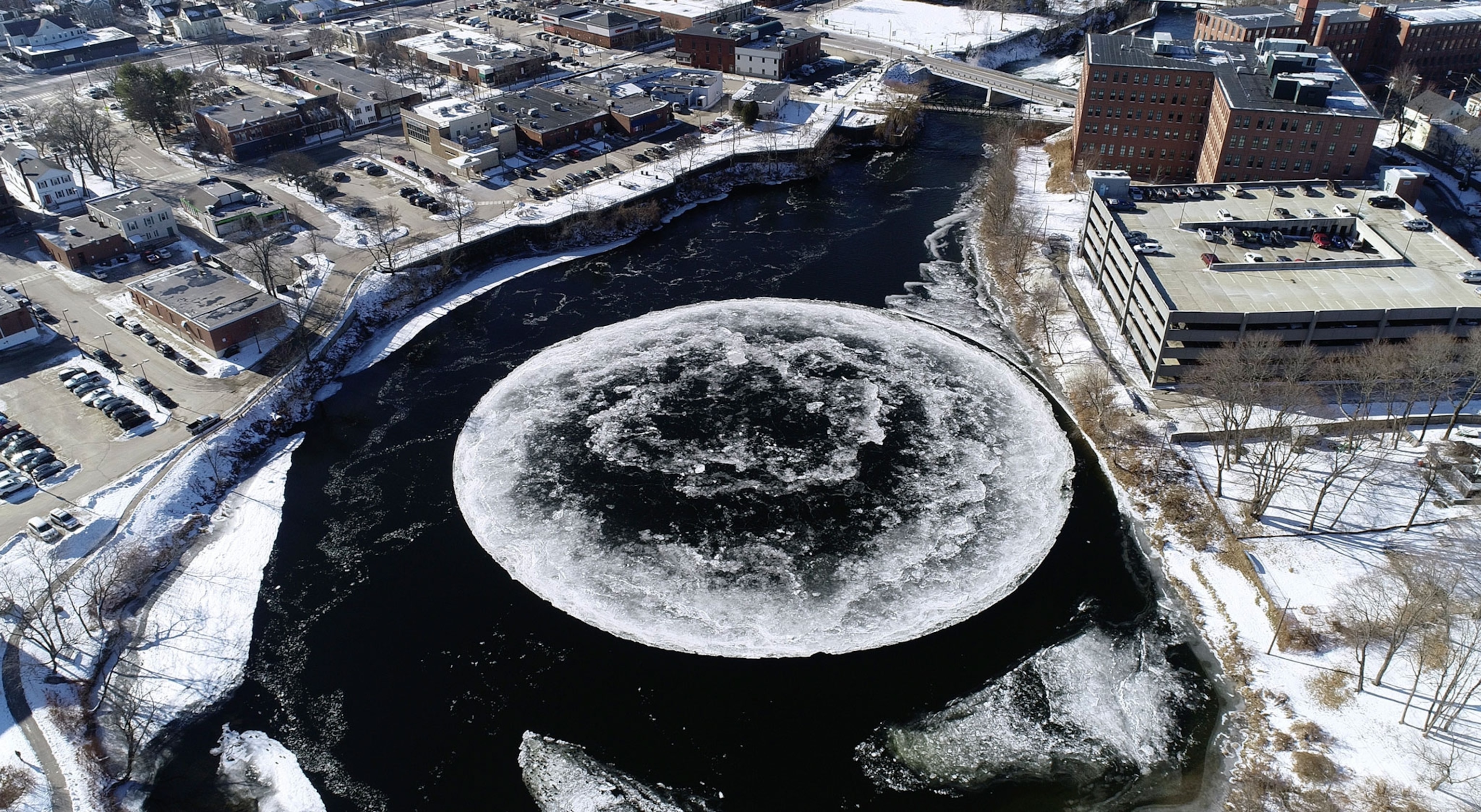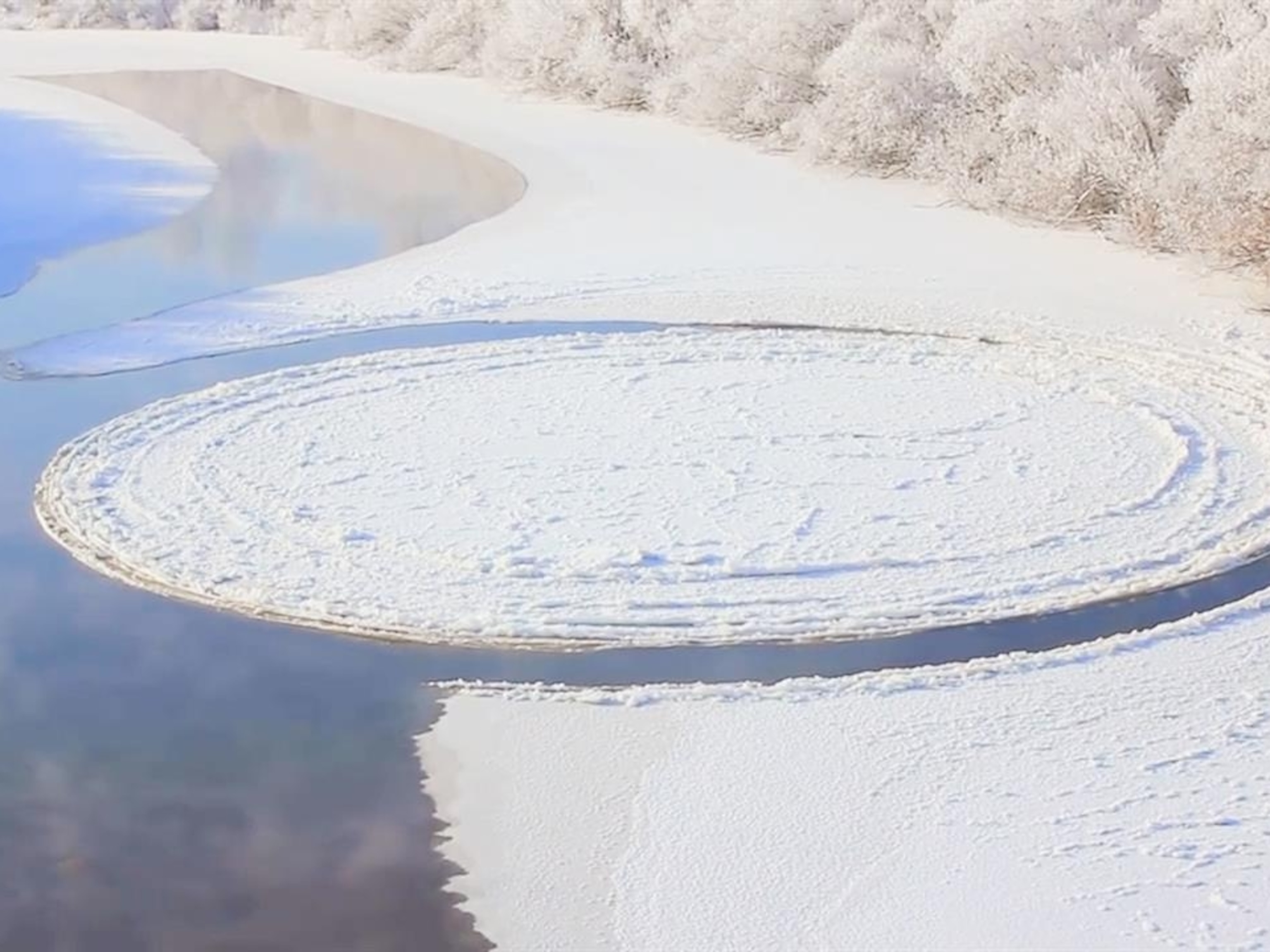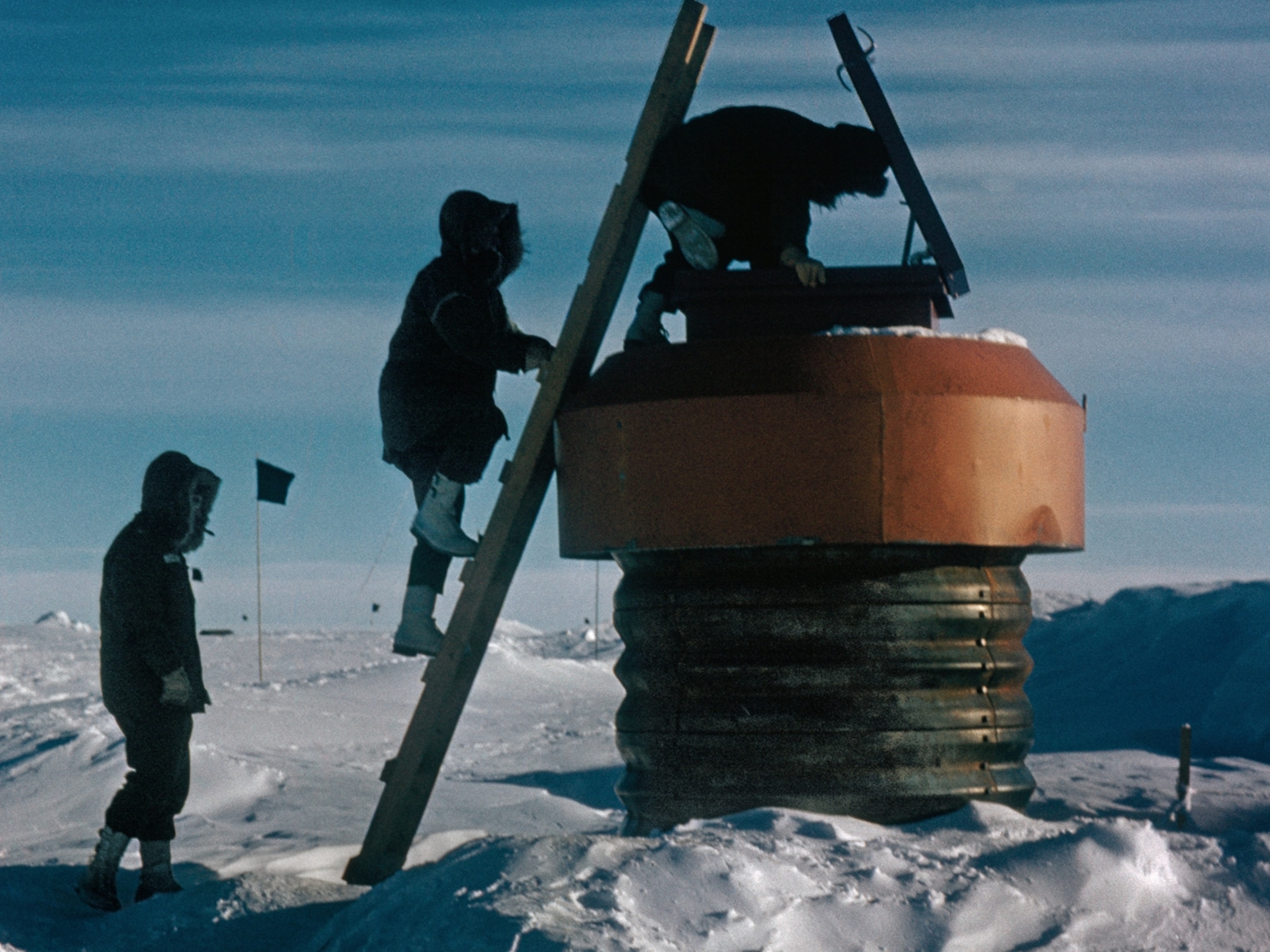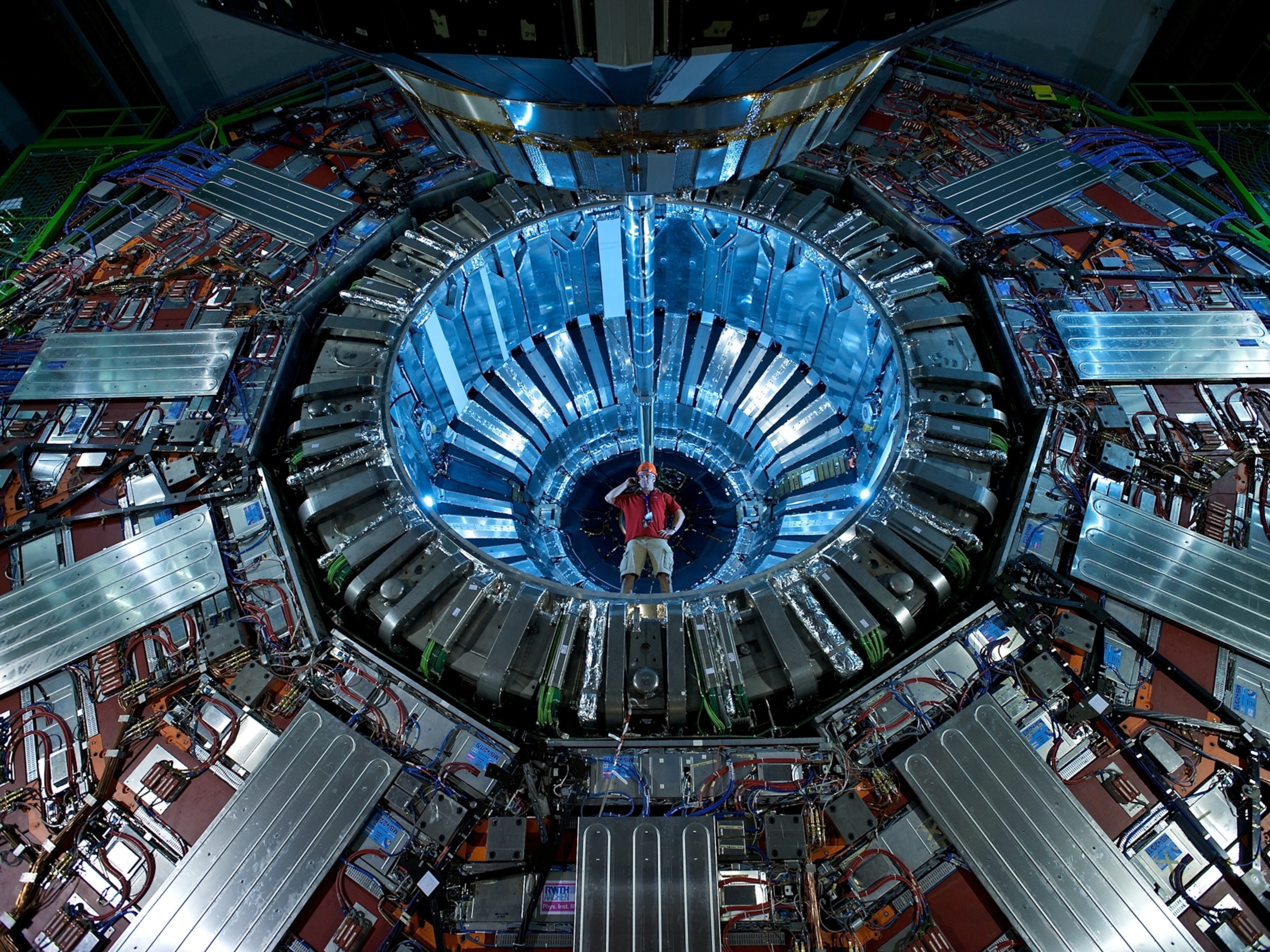
How Maine's giant spinning ice disk formed
Scientists have theories for how the 300-foot disk formed, though the phenomenon isn't entirely understood.
Like an icy lazy Susan; a wintry carousel; a frozen, spinning wheel—it takes little more than an ice disk to capture public attention and imagination.
One such ice disk befell the town of Westbrook, Maine, on Monday, slowly churning to life in the Presumpscot River that runs through the town's urban developments. As of Thursday, the disk was still intact and spinning.
“It kind of looks like a crop circle,” one resident told the Portland Press Herald.
It appears to be in the same spot though it reportedly changes opacity depending on the time of day and cloud coverage. The Herald estimates the ice disk to be 300 feet wide, one of the largest of its kind, but certainly not the first.
Ice disks have been spotted everywhere from Russia to Washington. The swirling plates are a happy accident of nature and are almost always perfectly round.
A 1997 paper in the Royal Meteorological Society theorized that river water created a whirlpool effect around a chunk of ice, slowly eroding it until its edges were perfectly smooth and circular.
But a 2016 paper added to this theory. Published in the journal Physical Review E, scientists theorized that river currents likely help such disks form initially but temperature changes are what keep them spinning. Warm water is less dense than cooler water, so as ice melts and sinks, it creates a vortex under the disk that causes it to rotate. The warmer the water, the faster the disk spins, they found.
As the paper also demonstrated, the effect can be replicated in a kitchen sink. Place a circular disk of ice into a warm tub of water, and you'll see the same vortex effect as the ice begins to melt.
Speaking with Maine Public Radio, University of Southern Maine physicist Paul Nakroshis expressed skepticism that temperature change led to the Maine ice desk, saying the Presumpscot River isn't warm enough to create a vortex under the broken ice.
“So most likely the cause of the rotation is just the river water going by the disk, and once it starts rotating in that direction it’s probably going to continue,” Nakroshis told the radio station.
According to a post on the city of Westbrook's Facebook page, local scientists are hoping to study the disk before it breaks apart.





